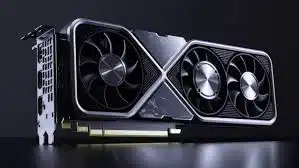- Introduction
- Importance of Driver Development
- Challenges in Driver Development
- Key Considerations for Developing Drivers
- Compatibility
- Performance Optimization
- Documentation and Community Engagement
- Tools and Resources
- Future Trends
- Conclusion
Introduction
The rapid evolution of graphical processing units (GPUs) and artificial intelligence (AI) accelerators has transformed the landscape of computing. Particularly in Linux environments, the development of efficient drivers is crucial for maximizing the performance of these technologies. Understanding how to develop and optimize drivers for modern GPUs and AI accelerators not only enhances system stability but also harnesses the full power of these hardware advancements.
Importance of Driver Development
Drivers are essential software components that enable communication between the operating system and hardware devices. In the context of GPUs and AI accelerators, the quality of drivers directly impacts performance, stability, and usability. Developing robust drivers ensures better resource management, enabling developers and users to leverage hardware capabilities for both computational tasks and graphical outputs.
Challenges in Driver Development
Developing drivers for modern GPUs and AI accelerators, especially on Linux, presents a distinct set of challenges:
-
Diverse Hardware Architectures: Manufacturers like NVIDIA, AMD, and Intel provide different architectures with unique requirements. Each GPU family may have its own programming interfaces and driver specifications, complicating the development process.
-
Open Source vs. Proprietary Drivers: The Linux ecosystem is home to both open-source projects and proprietary solutions. Open-source drivers often lack certain optimizations that proprietary alternatives provide, raising the question of whether to prioritize compatibility or performance.
-
Rapid Technological Advancements: The pace at which GPU and AI technology evolves necessitates that driver developers stay informed about the latest advancements in hardware capabilities, APIs, and optimization techniques.
Key Considerations for Developing Drivers
When embarking on developing drivers for modern GPUs and AI accelerators, several considerations should be addressed:
Compatibility
Ensuring compatibility across various Linux distributions is paramount. Developers must test their drivers on different kernels and environments, paying close attention to dependencies and conflicts that may arise due to diverse system configurations.
Performance Optimization
Maximizing performance involves fine-tuning drivers to exploit specific hardware features. This may involve hardware-level data caching, efficient memory management, and optimizing data transfer between the GPU and system memory. Profiling tools can provide insights into bottlenecks, allowing developers to iterate and improve driver performance.
Documentation and Community Engagement
Well-documented code and active community engagement are pivotal for successful driver development. Clear documentation supports usability and encourages collaboration, while feedback from the community can offer practical insights into real-world use cases, helping to identify issues and potential enhancements.
Tools and Resources
Several tools facilitate the development of drivers for GPUs and AI accelerators:
-
Kernel Development Framework: The Linux kernel provides a comprehensive framework for driver development, enabling developers to harness device features effectively.
-
Profiling Tools: Tools like NVIDIA’s Nsight or AMD’s Radeon GPU Profiler assist in analyzing performance and identifying areas for improvement.
-
Development Communities: Engaging with platforms like GitHub or various Linux forums allows developers to share knowledge, troubleshoot, and stay updated with recent advancements.
Future Trends
The future of driver development in the Linux ecosystem is poised for exciting changes:
-
Increased Integration with AI: As AI accelerators become more prevalent, drivers will need to integrate seamlessly with machine learning frameworks, enhancing performance for AI workloads.
-
Adoption of Standard APIs: Emerging standards like Vulkan or OpenCL could streamline driver development across different hardware, facilitating easier integration and potentially reducing the development cycle.
-
Greater Open Source Emphasis: The trend toward open-source solutions in the GPU space signals a shift that could encourage collaborative development, greater transparency, and continuous enhancements.
Conclusion
The landscape of developing drivers for modern GPUs and AI accelerators on Linux is both challenging and full of potential. By addressing compatibility, performance optimization, and community engagement, developers can create robust drivers that harness the full capabilities of today’s advanced hardware. With continued technological evolution, staying proactive and informed will be key to success in this dynamic field.
